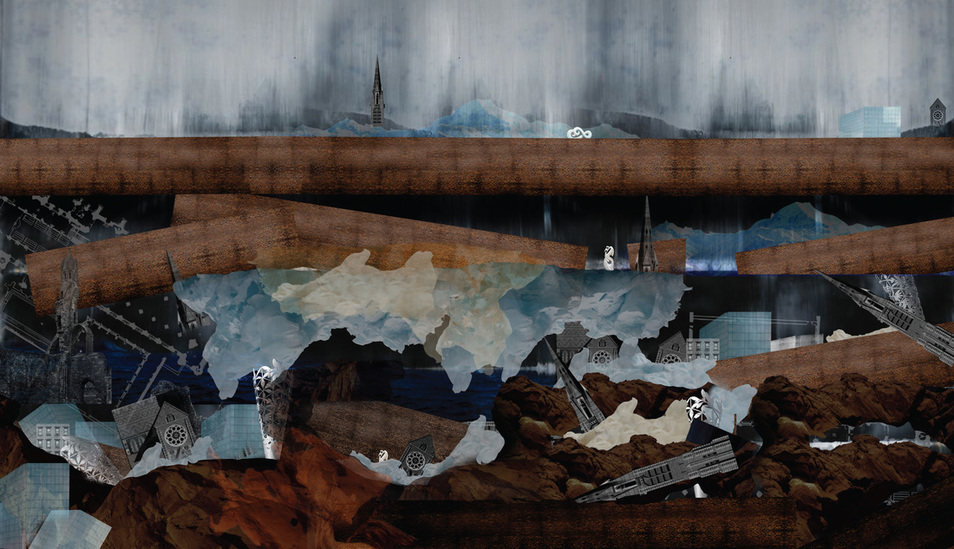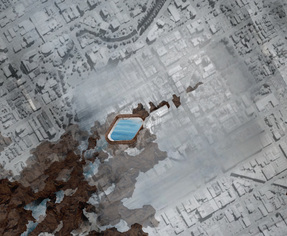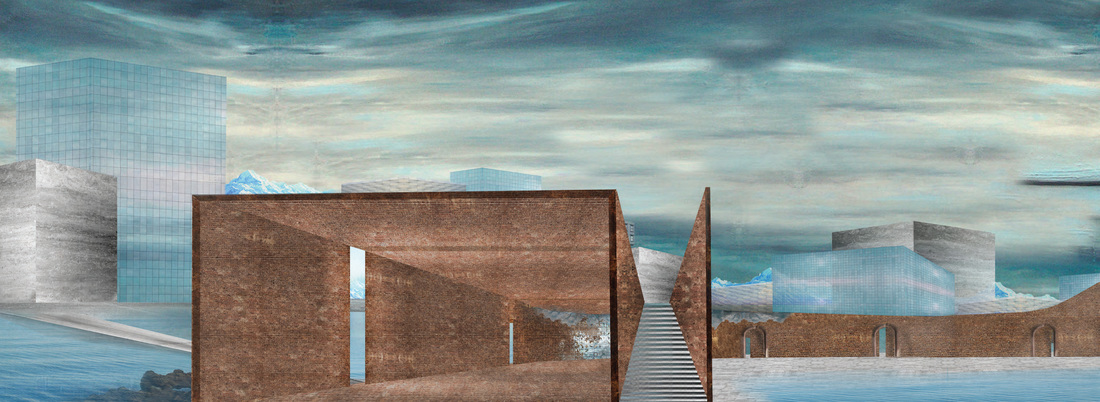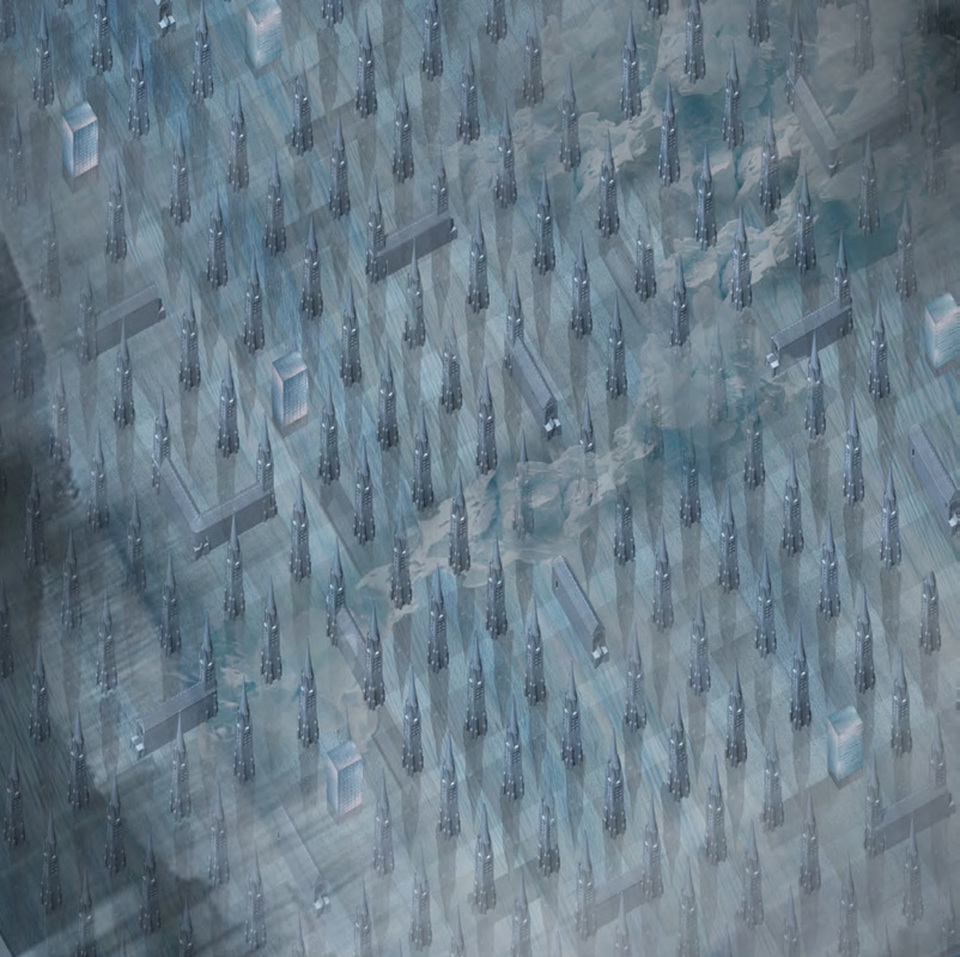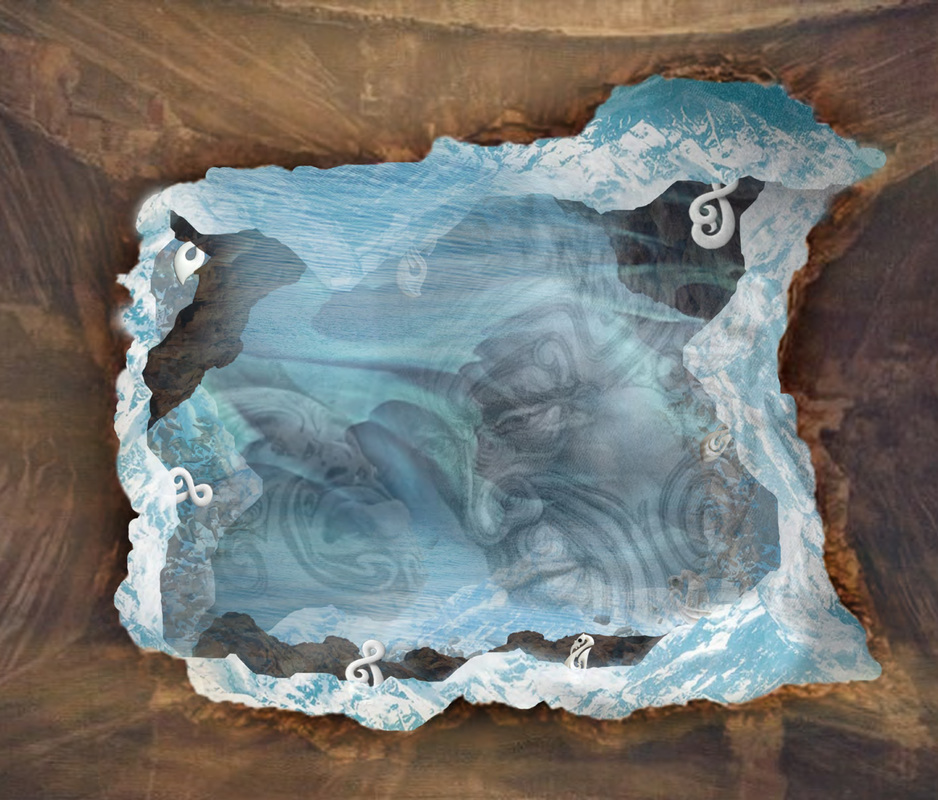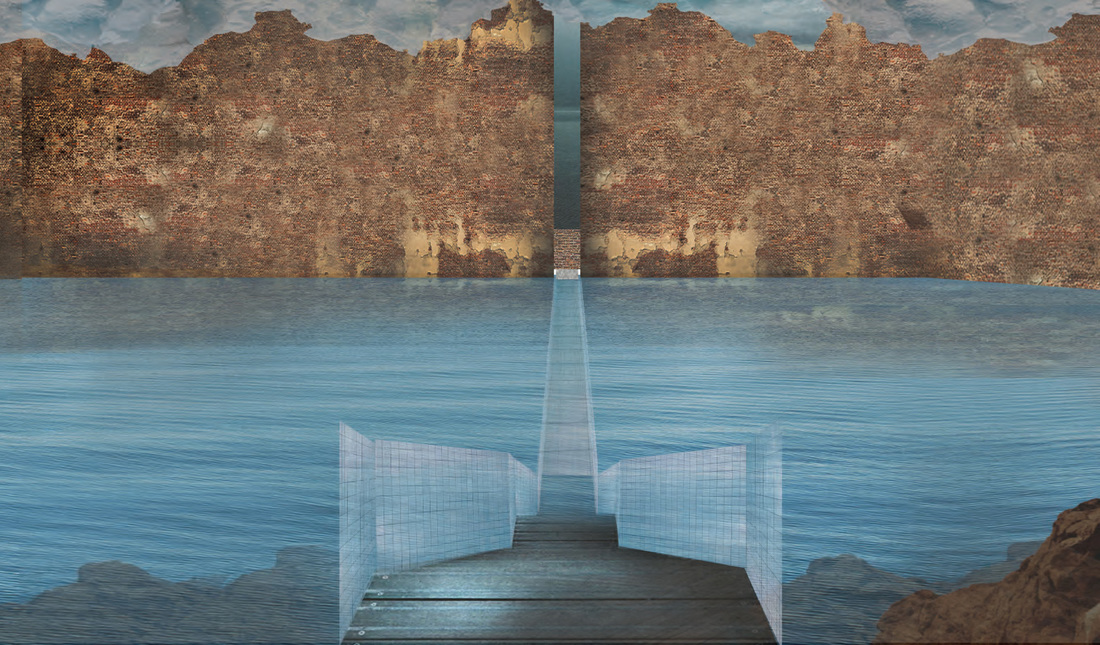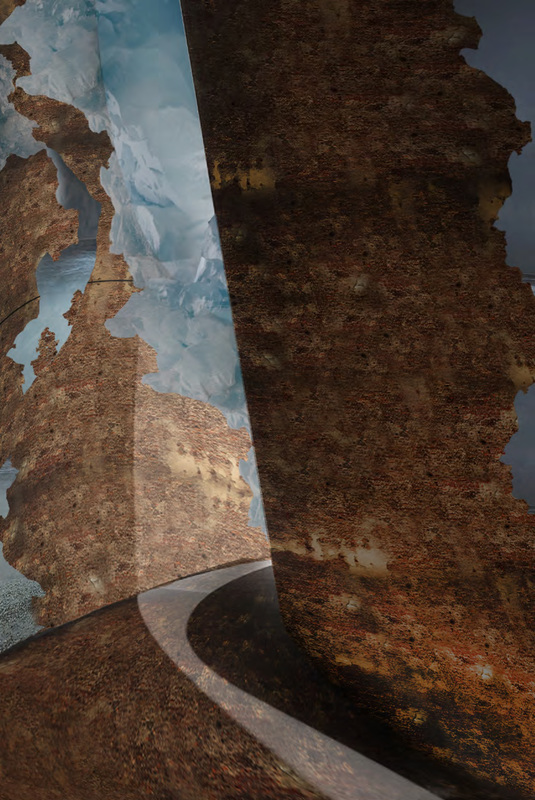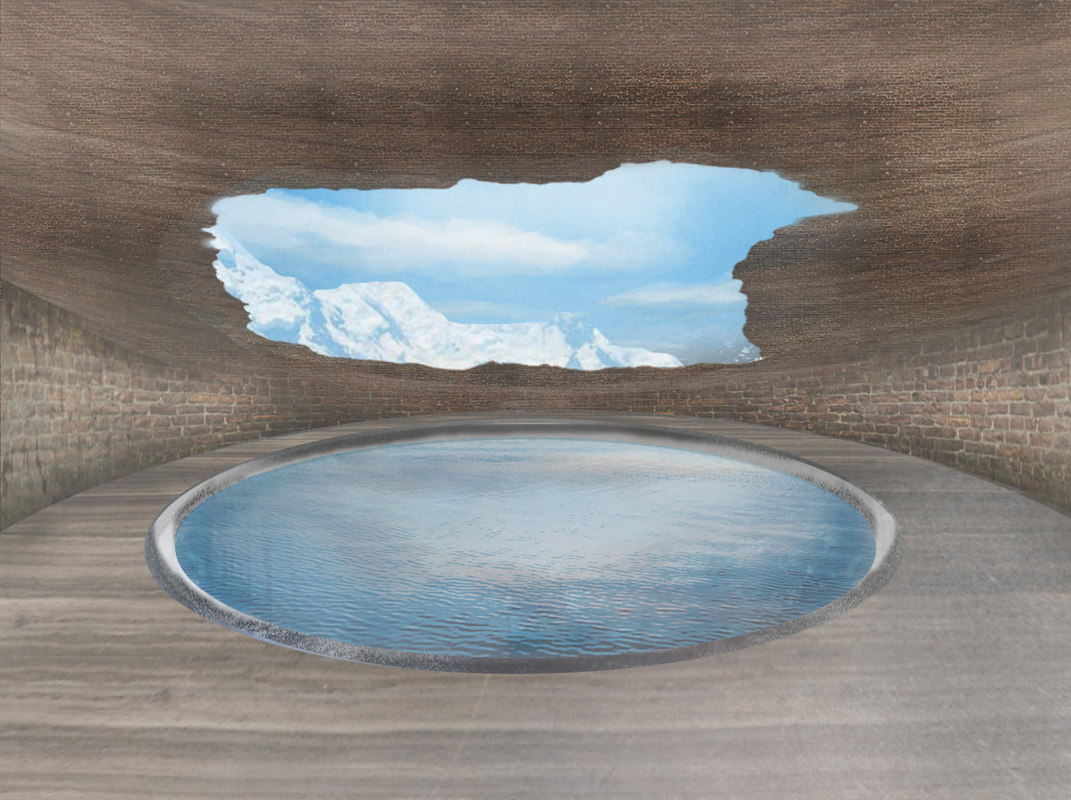Future Memory Void
Commemorating memory by rejecting the traditional conception of monument.
Jahanvi Sharma | University of Toronto
This thesis project situates itself in the post-earthquake city of Christchurch in New Zealand. Christchurch was struck by a devastating magnitude 6.3 earthquake in 2011 that was responsible for wiping out the core of this vibrant city and leaving some of the most beloved buildings in a state of ruin. Although elaborate plans for redevelopment have been made and are underway for the future as Christchurch once again aims to be the economic center of the Canterbury region — largely defined by the south east coast of the country.
I’d like to take this opportunity to contemplate. Through the power of drawing, my thesis project extracts the essence of a speculative space that provokes questions of historical preservation and commemoration of memory in Christchurch. My project questions the way in which we commemorate memory by rejecting the traditional idea of a monument and using space/place as a landmark Future memory void is a place where simultaneous histories (past, present and future) are presented to trigger individual and collective memory in order to highlight the fact that history is not chronological and memory is not linear. It is a perpetual journey through the presence of an absence — a pilgrimage without destination, which reorients one's sensibilities within the context of a city that is in the state of flux. The optimism of the future, the gravity of the past and the uncertainty of the present coexist in a liminal moment, which can only be experienced and understood through drawing.
I’d like to take this opportunity to contemplate. Through the power of drawing, my thesis project extracts the essence of a speculative space that provokes questions of historical preservation and commemoration of memory in Christchurch. My project questions the way in which we commemorate memory by rejecting the traditional idea of a monument and using space/place as a landmark Future memory void is a place where simultaneous histories (past, present and future) are presented to trigger individual and collective memory in order to highlight the fact that history is not chronological and memory is not linear. It is a perpetual journey through the presence of an absence — a pilgrimage without destination, which reorients one's sensibilities within the context of a city that is in the state of flux. The optimism of the future, the gravity of the past and the uncertainty of the present coexist in a liminal moment, which can only be experienced and understood through drawing.
Obsolete Object
The ruin is a self-referential object. It is majestic but stagnant. A moment of realization, a melancholy moment where the object is stripped of its meaning, cultural significance, charm, gravity and sacredness.
What is left is the object as a reminder of a particular reality, the lingering desire for which is in itself a memory.
The ruin is a self-referential object. It is majestic but stagnant. A moment of realization, a melancholy moment where the object is stripped of its meaning, cultural significance, charm, gravity and sacredness.
What is left is the object as a reminder of a particular reality, the lingering desire for which is in itself a memory.
|
Utopia
An archipelago of monuments, a plethora of landmarks creating a decedent architectural wasteland. It is infinite and unattainable like air. Is the object really obsolete? Does its reconfiguration and reimagination as a "place" give it a new role within the context of memory making? |
Tapu - Sacred or Untouchable
The object is obsolete. The monument is in the earth and how it heals, in the fire as it purifies, in the resonating chants of the elders revering the elements and making sacred spaces. The monument is in the place - the place that acknowledges the past, accommodates the present and anticipates the future in the same breath. It is a liminal space, a moment of contemplation and rediscovery, a void. |
|
Encounter
A moment of anticipation and mystery where moment is prescribed. The illusion of depth is captivating. The water is unstable and volatile but the promise of a destination beyond the narrow aperture in the wall is grounding. What is the wall? It is the earth, shaped and reshaped. It is a material manifestation of past, present and future memories. It is the solid that defines a void; a threshold between two worlds, one of imagination and one of reimagination. Metamorphosis
The wall dematerializes into a translucent crystalline fluid, which holds captive discernible objects. Crafted objects, symbols and objects of the earth that are familiar and reorienting. Multiple histories resurface through the stories that are latent within the objects. Their adjacencies bring into being new realities. This is a potent space, a potential conclusion. But did the earthen wall dematerialize or is this how it starts coagulating? Where did it begin and where will it end? Did it begin at all? |
Evanescence
Change is inevitable. The permanence of the wall, its solidity gradually gives way to lightness. What is solid? That which is palpable but dematerializes, decays and becomes obsolete or the phenomenon of the omnipresent sky, which is intangible. What is void? The absence of a presence or the presence of an absence. It is the apparent presence of an absence, the absence of an ultimate conclusion or destination. Movement is perpetual. |
Spirituality
A place is made to foster moments in which thresholds collapse, boundaries dissolve and elements lose their particular attributes. A confined water body reflects the sky while the ground lies above and below. This is a space of emersion and spiritual contemplation. A space that makes light tangible and sound palpable. Objects no longer exist, the wall is no longer a defining entity and the distinction between reality and fiction cannot be made.
A place is made to foster moments in which thresholds collapse, boundaries dissolve and elements lose their particular attributes. A confined water body reflects the sky while the ground lies above and below. This is a space of emersion and spiritual contemplation. A space that makes light tangible and sound palpable. Objects no longer exist, the wall is no longer a defining entity and the distinction between reality and fiction cannot be made.
Place as Monument
A container and generator of memories. A positive and dynamic space of pure potential that provides glimpses into the past and alternative versions of the past, which resemble potential futures.
A container and generator of memories. A positive and dynamic space of pure potential that provides glimpses into the past and alternative versions of the past, which resemble potential futures.
Jahanvi Sharma
I am a proud New Zealander currently living in Toronto, Canada. I have recently completed my Masters of Architecture from the John H. Daniel’s Faculty of Architecture, Landscape and Design at the University of Toronto and am currently working as an Architectural Intern. Formerly, I received my undergraduate degree in Architectural Studies from the University of Auckland, New Zealand.
I enjoy every aspect of design and aim to blur the boundaries between different disciplines to create unexpected hybrids. I find inspiration in food, books, nature, travel, fashion and art. Wandering (aimlessly exploring) is my guilty pleasures and I am happiest when it rains!
I enjoy every aspect of design and aim to blur the boundaries between different disciplines to create unexpected hybrids. I find inspiration in food, books, nature, travel, fashion and art. Wandering (aimlessly exploring) is my guilty pleasures and I am happiest when it rains!

